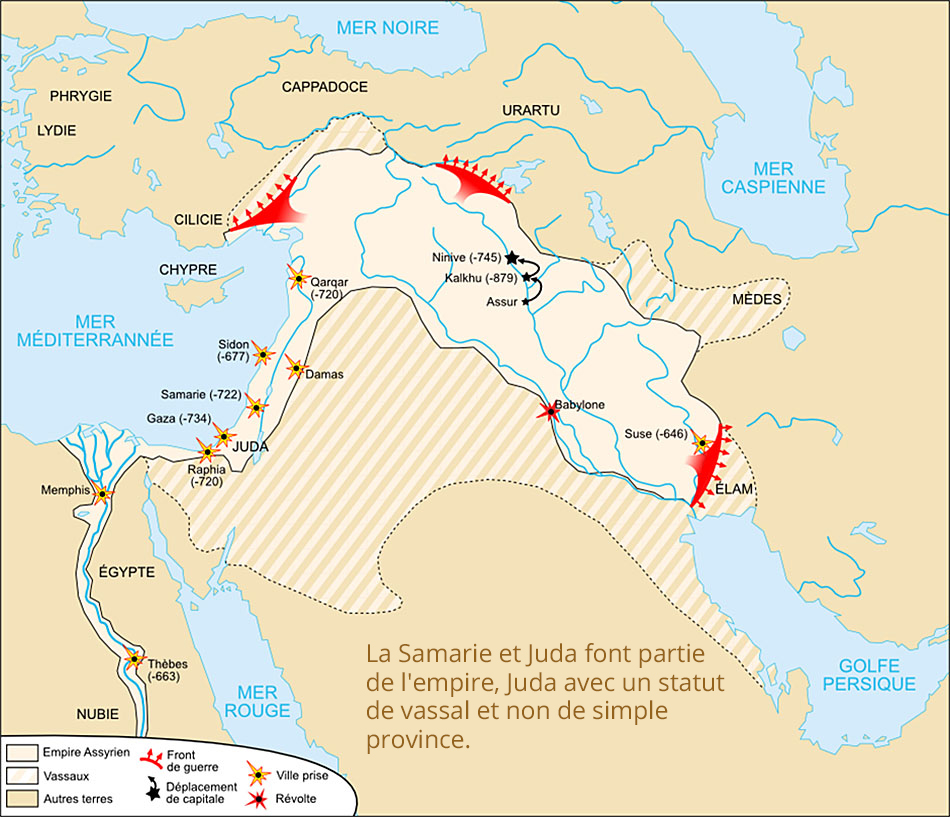
Bible, History, Archaeology
Bible,
History,
Archaeology
The expansion of the Assyrian Empire
The expansion of the Assyrian Empire
Assyria is an ancient region in northern Mesopotamia, named after the city of Ashur, after its patron deity. In the 2nd millennium BC, a powerful kingdom was formed from this region, which later became an empire. In the 8th and 7th centuries BC, Assyria controlled territories extending over all or part of several of today's countries, including Iraq, Syria, Lebanon, Turkey and Iran.
Assyriology, the discipline that studies ancient Assyria and, more broadly, ancient Mesopotamia, distinguishes three phases in Assyrian history, bearing in mind that dates prior to around 700 BC remain approximate: the Paleo-Assyrian period, from the twentieth to the early fourteenth century BC; the Medio-Assyrian period, up to 911 BC.C. dates remain approximate: the Paleo-Assyrian period, from the 20th to the early 14th century B.C.; the Medio-Assyrian period, up to 911 B.C.; and the Neo-Assyrian period, up to 612-609 B.C., date of the end of the Assyrian kingdom.
To view the map of the expansion of the Assyrian Empire, click on the image.

